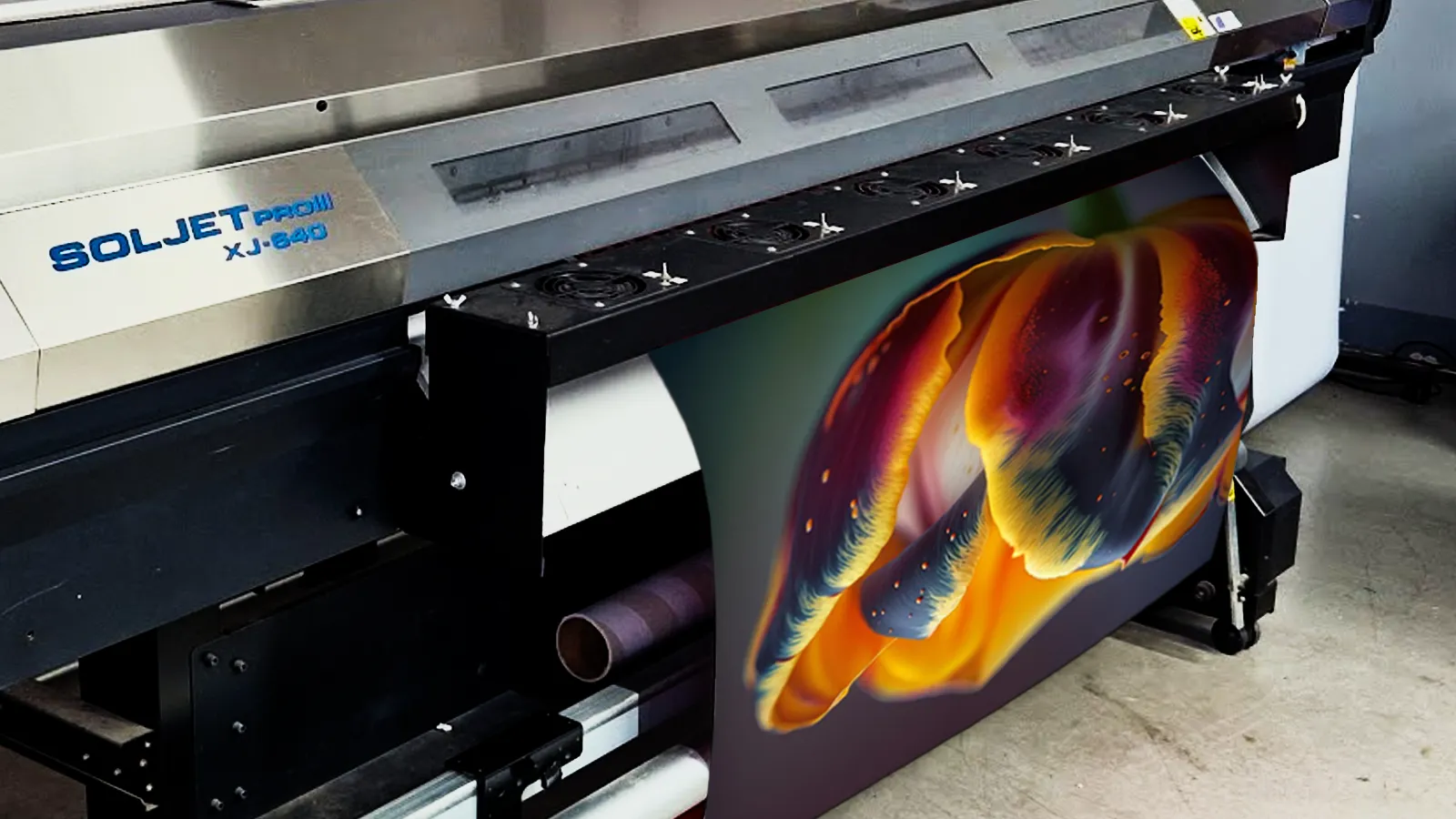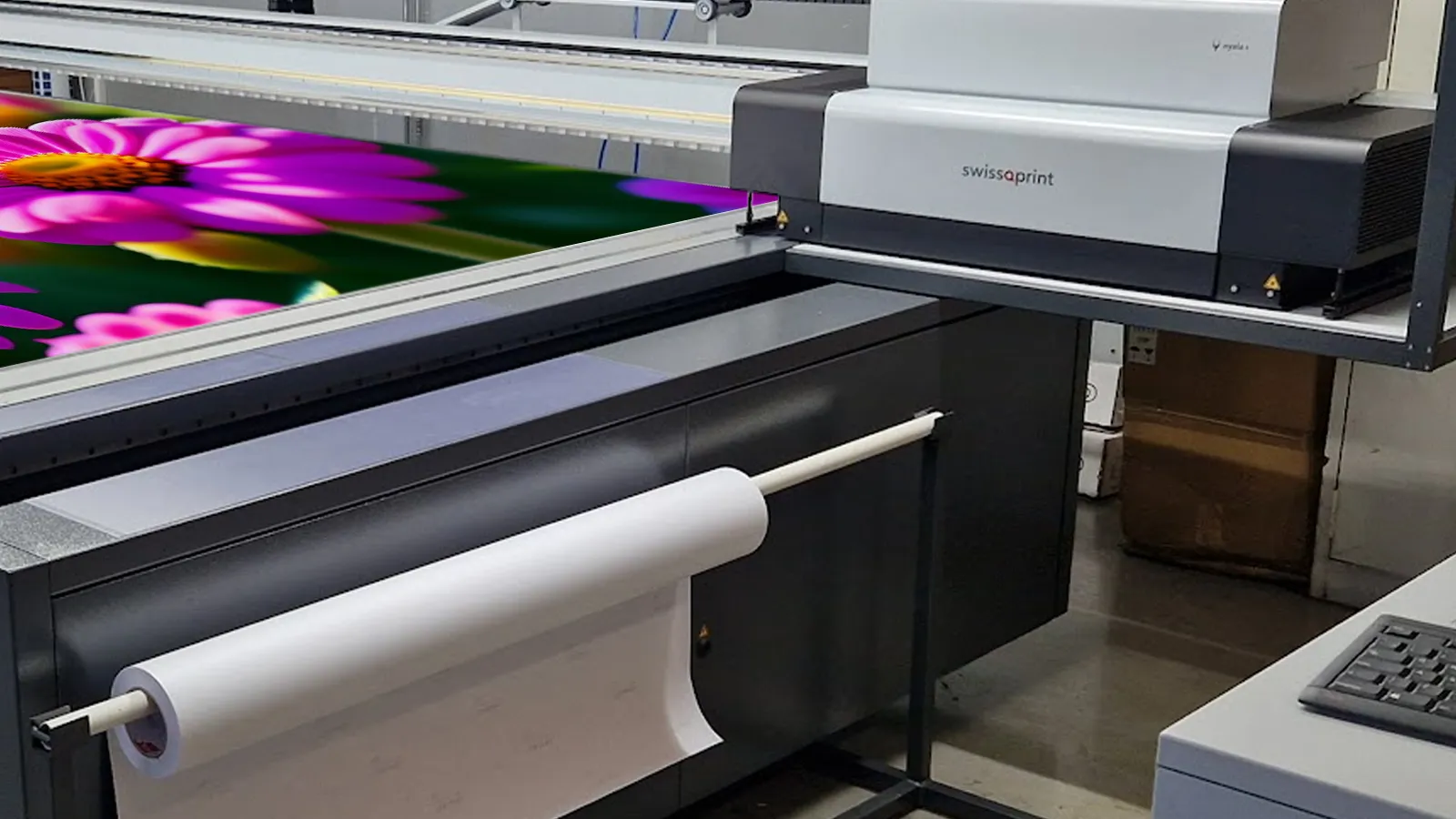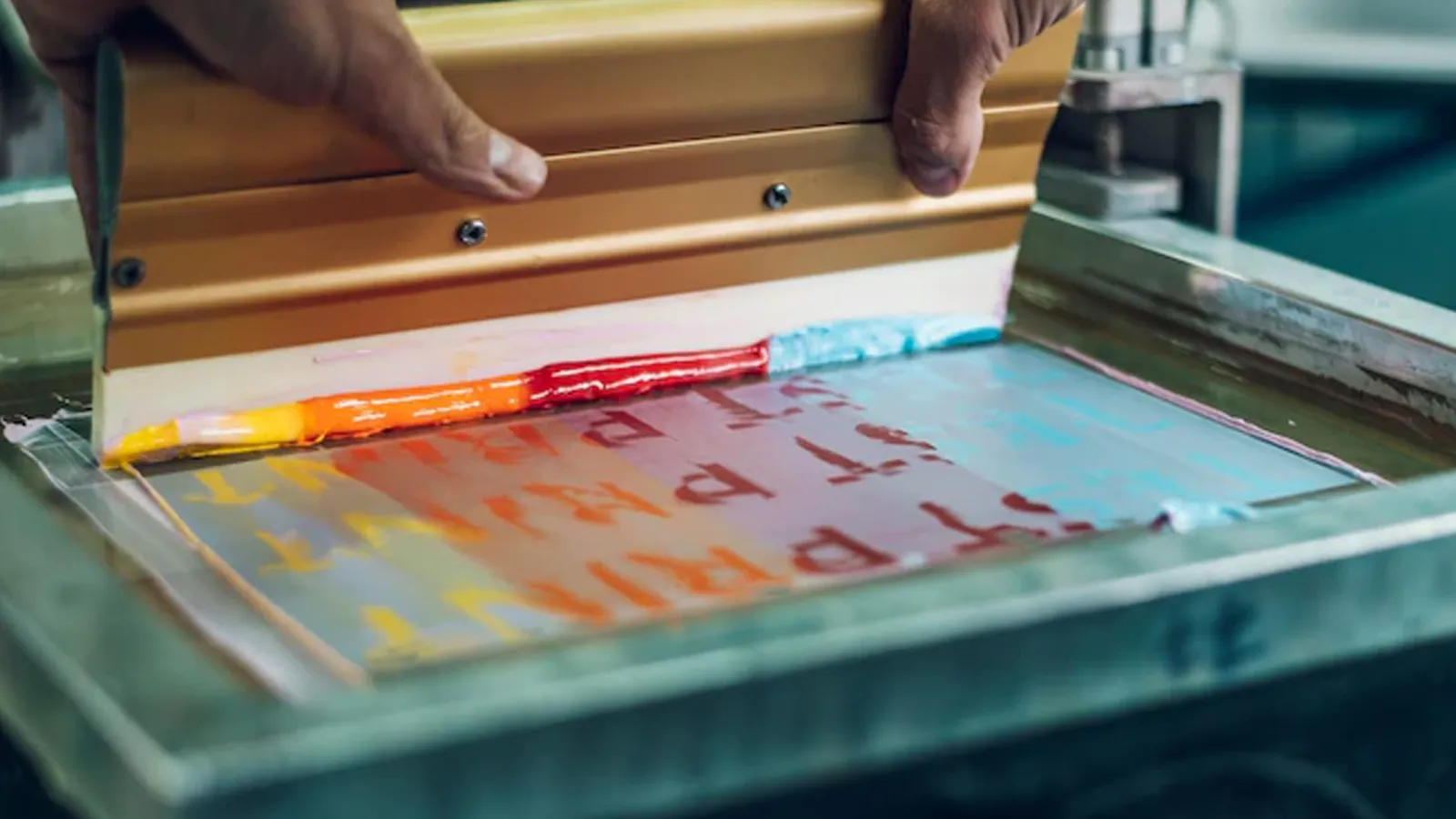PRINTING TECHNOLOGY

Solvent Printing
Solvent printing is a type of printing technique that uses organic solvents to dissolve inks and apply them to the surface of the material. It is mainly used for printing banners, posters or stickers. Solvent inks are durable and weather-resistant, making them popular for outdoor applications.
UV Digital Printing
UV printing is a type of digital printing that uses ultraviolet light to quickly cure ink when printing on various surfaces. This technology allows direct personalization of products by printing on various flat materials (Alu-Dibond composite boards, PVC boards, Plexa, glass, furniture boards, wood, plaster, petg, backlit, etc.) as well as rollers (banners, papers, films). UV printing is particularly popular in the advertising industry, because the ink is immediately hardened by UV light, changing to a solid state, making it more resistant to mechanical damage and weather conditions, so the printed materials can be used both in indoor advertising (reproductions of paintings, posters, stickers, backlit advertising) and outdoor advertising (signs, billboards, banners).


